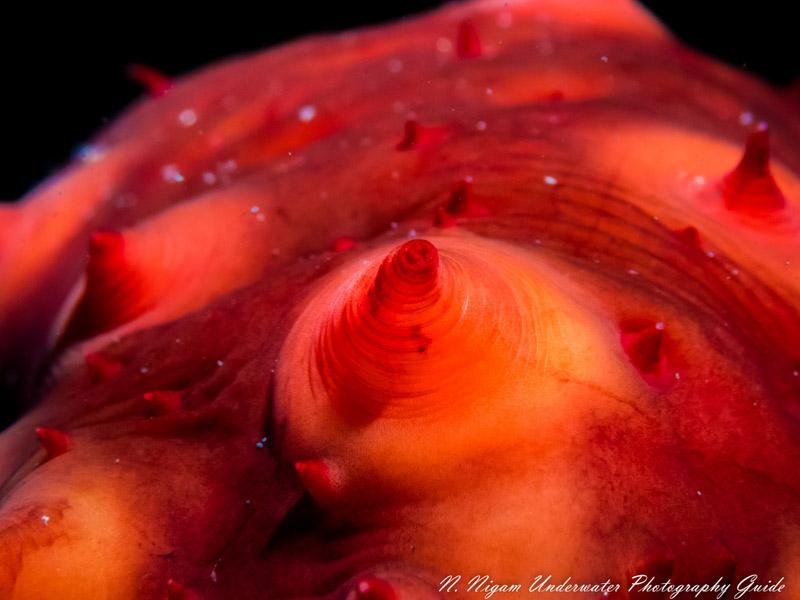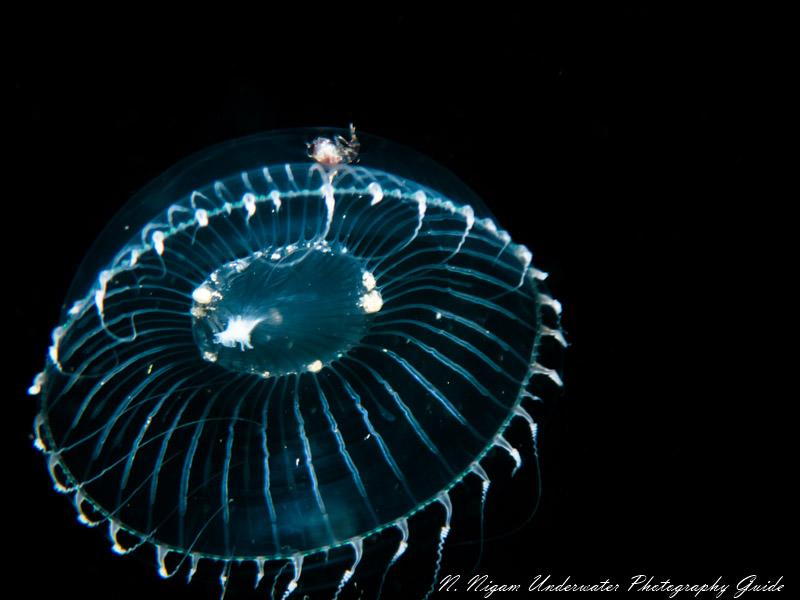OM System TG-7 Underwater Review
Posted by Nirupam Nigam on September 27th, 2023

The OM System TG-7 is the successor to the popular Olympus TG-6 compact camera. TG-6 shooters will be happy to know that the OM System TG-7 underwater housings are the same as the TG-6. However, this also means that the TG-7 is almost exactly the same as the TG-6. There have only been a few minor upgrades to the camera including a new charging port, vertical video capture, and a construction mode. If you are already a TG-5 or TG-6 shooter, the OM System TG-7 will not be worth the upgrade. But if you are looking for an excellent compact camera with incredible macro capability, the TG-7 is a great option for underwater photography.
OM System TG-7 Specifications
- 12 megapixel, 1/2.33" sensor (smaller than Canon G7X Mark III and RX100 VII)
- Olympus TruePic VIII image processor
- Waterproof (50ft without housing), shockproof, crushproof, freezeproof
- Fast f/2.0-4.9 lens with 4.5mm - 18mm focal length (equivalent to 25mm - 100mm)
- Sensor-shift image stabilization (up to 2.5 stops)
- Minimum working distance 1cm (in super macro mode)
- ISO range 100 - 12,800
- 25 autofocus points with Single AF and Tracking
- 4K@30p video recording (approx. 102 Mbps bit rate)
- High Speed Movie mode with 1920x1080@120fps / 1280x720@240 fps / 640x360@480fps
- 4K timelapse video
- Pro Capture mode for 20fps image capture
- Shutter speed 4 sec to 1/2000 sec
- Custom white balance (4 slots)
- Built-in flash
- SD storage (SD, SDHC, SDXC)
- RAW and jpeg shooting
- WiFi capabilities, including camera control via smartphone
- Action track sensors record location, temperature, direction and altitude data
- Weight (approx): 249g / 8.72oz with battery & memory card
- Dimensions: 113mm x 66mm x 32.7mm (4.43in x 2.6in x 1.23in)
- Battery life (CIPA): 330

So what is new in the TG-7, compared to the TG-6
There have been a few small minor updated to the TG-7, nothing that will really affect underwater shooters too much. The updates are as follows:
1. The TG-7's charging and data transfer port has been updated to USB-C.
2. The TG-7 will automatically rotate your video vertically if you take vertical videos for social media.
3. There is a new construction mode for people that need to bring the camera to worksites.
TG-7 Image Quality
Both the TG-7 and TG-6 include imaging features that are similar to each other. Both have the TruePic VIII image processor and a Type 1/2.3 format 12MP BSI CMOS sensor, hence one would expect the image quaiity of the new TG-7 to be very similar, if not the same, as the previous TG-6. Both simple JPG photos with various color filters (these are hard to find as they are buried within the menu system of the Om System operating platform) and the Raw format for power users are supported by the TruePic platform.
Although the dynamic range isn't quite as good as 1" compact cameras currently available on the market, it still performs admirably for macro photographs, which frequently don't need as broad of a dynamic range as wide angle images (such as sunball shots). Fans of macro photography will continue to enjoy the TG-7's microscope mode.
Below are some sample images from the Olympus TG-6 camera.

Wolf Eel photographed with the TG-6

Sea cucumber skin photographed with the Olympus TG-6, Ikelite TG-6 housing, and DS 51 strobe. Shot in aperture priority mode using supermacro AF. f/16, 1/80, ISO 400

Jellyfish photographed with the Olympus TG-6 in an Ikelite TG-6 housing, Ikelite DS 51 strobe, and RC1 TTL converter. 1/100, f/14, ISO 100
Rugged, Waterproof and Ergonomics
The OM System TG-7 is a classic small compact camera. With dimensions of 2.6 by 4.4 by 1.3 inches (HWD) and a light weight of only 8.8 ounces, it may easily fit in a pocket. As with the TG-6, the camera is available in either a metallic red or a black finish, and the metal frame emphasizes the sturdy construction, with the TG-7 showing some minor aesthetic adjustments to the handgrip. The camera is freezeproof to 14F/-10C, crushproof to 220 lbs/100kg, and shockproof from 7ft/2.1m. The camera is fully dustproof and has a waterproof IP68 rating to 50ft. If you get a minor flood at depth in your underwater housing, your camera is likely to survive!
Battery Life
The TG-7 has a 330-shot battery life rating. In our experience with the TG-6, we now advise replacing the camera battery after each dive, or after every other dive if you don't take many pictures. If you plan to use the TG-7 for a diving trip, we advise purchasing a few extra batteries.
AutoFocus System
The TG-7 focus system is rudimentary compared to other cameras in it's class. The autofocus is pretty basic but gets the job done, to a certain degree. The Tg-7 uses a central point of interest to focus and also supports basic face detection for humans. Focus tracking is non-existant, and should be avoided as it easily loses track of the subject. The burst rate is will be sufficient for most purposes, ramping up to to 20fps with an electronic shutter, 10fps with a pre-capture buffer, or 5fps with the mechanical shutter.
Strobes and TTL/RC Capability
The use of strobes underwater is imperative, in order to bring back the colors which are lost as light penetrates through water, the deeper you go, the more colors of the color spectrum are lost, and this is where strobes are so important. Using a strobe mode called through-the-lens (TTL), your camera regulates the strobe power using its own light metering, taking away all the guess work for you and supplying your image with the correct amount of light to correctly expose it. Your strobes receive the internal flash trigger via fiber optic connections, and they respond with a similar amount of power. With the Sea & Sea YS-03 Solis Strobes, Sea & Sea YS-01 Solis Strobes, Inon s220 Strobes, Apollo 28 Strobes, and Apollo 33 Strobes, optical TTL is possible when using fiber optic cables. TTL functions in all modes, including P, A, and auto.
Maximum recycle time for the built-in flash of the TG-7, which is using to fire your strobe via a fiber cable, is 4 seconds. This will feel like an eternity when shooting underwater, where bottom time is limited. One option to avoid this is to avoid shooting on TTL, and fie your strobe using manual settings. By using the manual power settings, one is able to dial down the power output of the strobes, which will greatly improve recycle times, allowing you to capture more sequences or photos, while exposing correctly by adjusting you camera settings, during your limited time underwater.
The Best Option for TTL (auto strobe exposure)
Both Sea & Sea provide a helping hand when it comes to getting correct exposures underwater, while shooting on manual settings. Ikelite offers the RC1 TTL converter, while Sea & Sea has the RC compatible YS-D3 duo strobe.
A unique tool that can only be utilized with Ikelite DS strobes is the RC1 TTL converter. This Converter uses the RC flash signal from your Olympus TG-6 to send a signal to the Ikelite DS flash to use the proper exposure for your photograph. It has excellent outcomes and is incredibly accurate. All of our TG-6 sample pictures were taken with the RC1 TTL converter. We advise the DS 51 strobes for the TG-7, and the DS 160s, if you require a lot of light for wide angle photography. The Sea & Sea YS-D3 Duo performance is comparable. This strobe works well for wide-angle and macro photography.
Microscope Mode
The Olympus TG-6 was well known for it macro photography prospects, allowing for close-up photos, of small subjects, without the need to attach a macro lens. The TG-7's other modes also support supermacro autofocus, enabling you to employ "microscope mode" in aperture priority. When using the camera's microscope mode, a pro suggestion is to fully zoom it in and get near to your objects.

Periwinkles on eel grass. Olympus TG-6 in an Ikelite TG-6 housing, Ikelite DS 51 strobe, and Ikelite RC1 TTL converter
Om System TG-7 Underwater Video
The TG-7 is a good camera for capturing underwater video, although not the best. It is capable of capturing 4K video, although it is recommended to capture in 1080 60p in order to be able to slow down video sequences for better stabilization, without losing much in the way of quality.
The OM System TG-7 does show some enhancements in its video capabilities, offering a range of features tailored to cater to various needs. One standout feature is its support for vertical video, making it an ideal companion for vloggers and social media enthusiasts. This functionality allows for seamless recording in vertical aspect ratios, ensuring your content looks good when shared online.
Another noteworthy feature is Interval Shooting, a valuable tool for capturing moments in a unique way. Interval Shooting enables you to take a series of photos spaced out over a predefined period, making it ideal for capturing dynamic action sequences or creating captivating time-lapse videos.
Additionally, the TG-7 comes equipped with Pro Capture Mode, which proves invaluable when you need to freeze a critical moment within a fast-paced action sequence. This mode operates by buffering images when the shutter button is half-pressed, ensuring that up to 70 frames, both before and after releasing the shutter button, are saved. This feature empowers you to never miss that perfect shot, even in the most dynamic situations.
Conclusion
The OM System TG-7 is an excellent compact camera for underwater photography. It is a particularly powerful macro photography tool. However, with the increase in price from the TG-6 to TG-7, it might be worth looking at an inexpensive, higher quality APS-C camera like the Canon R100. Certainly, it is not worth upgrading to the TG-7 from the TG-6. The only real improvements are a construction mode, an updated usb-c port, and a vertical video mode. But the one upside to this is that most TG-6 housings with work with the TG-7.




